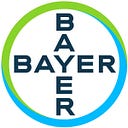By Sarah Mills, Biologics Scientist, Crop Science, Bayer U.S.
When I was in the sixth grade, I remember learning about the physics of flight by making paper airplanes. That simple lesson captured my imagination and ignited a scientific curiosity that probably helped lead me to my current profession.
Hands-on STEM (Science, Technology, Engineering and Mathematics) experiences stick with you because they are tangible — and exciting. A STEM event I attended in a neighboring community reminded me of my passion for this type of learning and inspired me in 2017 to coordinate the first-ever “Science Night” for my daughter’s elementary school, Zamora Elementary, located in Woodland, California.
Our first event attracted 300 students, parents and teachers, and was such a hit that we committed to doing a second Science Night, which we held in May of this year.
When first planning this event, I’ll admit I had no idea where to start. So I just began reaching out to other stakeholders at work and in our community. After many phone calls and emails, we assembled a fantastic line-up of hands-on STEM learning for the event, including participation from the California Raptor Center, Mad Science of Sacramento, Tuleyome (an environmental education organization), Monsanto Company, the UC Davis Chemistry Department, UC Davis Physics Club, and stations hosted by parent volunteers.
Bayer, the company where I work, has a program called Making Science Make Sense (MSMS) that fosters science learning through hands-on experiments led by employee volunteers, collaborating with schools and other youth organizations. So of course, our local MSMS team also played a big role in the event.
While it’s a lot of work, I find the planning of this event to be energizing. My goal is to have something that appeals to every student, so each year I’ve tried to get a good balance of different types of STEM activities.
Something new this year was the addition of student science projects. We were very lucky to have the support of the school to fund an eight-week after-school science program, led by two teachers, where students created their own science projects from start to finish.
The students had to go through all steps of the scientific method, and they came up with some impressive projects. They were so proud to show off their work at the event; we will definitely continue the student participation element in the future. In fact, we hope to expand that portion of the event.
In planning and participating in Science Night, I have learned families are really looking for these fun and interactive learning opportunities. It’s neat to watch the parents sitting side by side with their kids learning about atmospheric pressure using marshmallows or about how owls locate prey. I’m not sure who’s more excited… the parents, the kids, or those of us seeing their faces light up.
Even as we were cleaning up after the event, the conversation was already centered around next year. I have a big goal of making this a community-wide event at some point in the future, but for now, seeing the students and their families enjoying the event — and hopefully remembering those things that stood out to them — makes it all worthwhile.
Read more >> For more information and photos from Science Night, please see the article from the Daily Democrat News: Science takes over Zamora Elementary School in Woodland.
